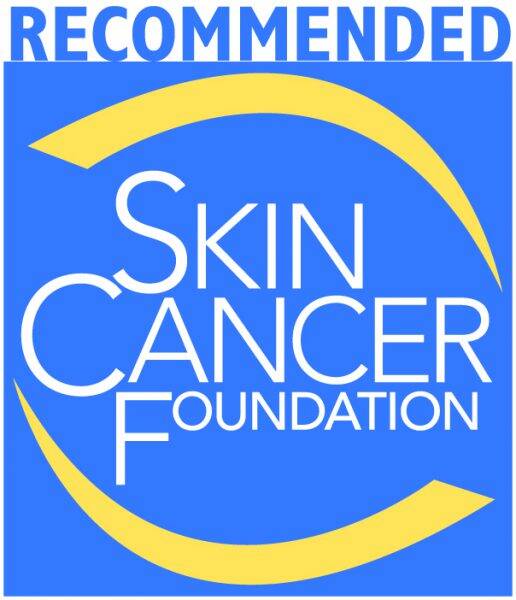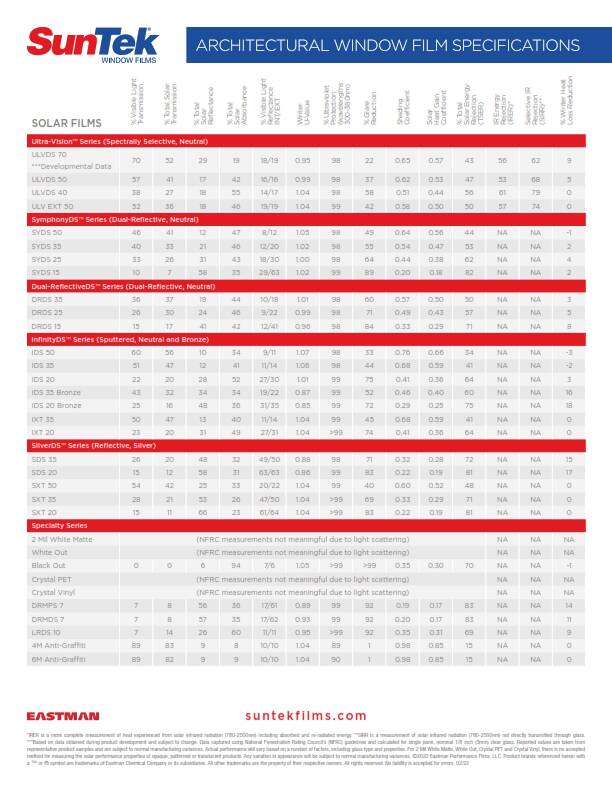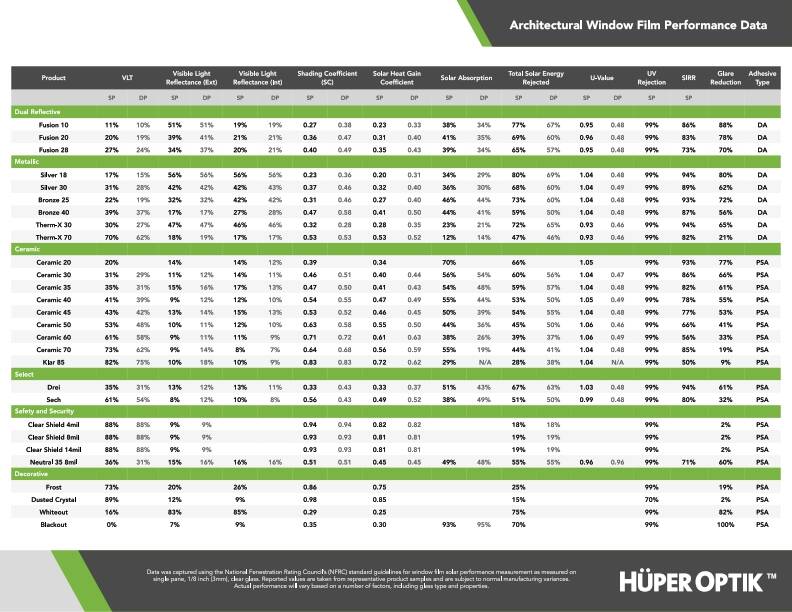Window Tint
check out some of our decorative film options
Window tint estimate form
Looking for a quick window tint estimate? You can print and Fill out our window tint estimate FORM or use the ONLINE FORM and email it back to us. We will get you an estimate within 24 hours!
We proudly offer the full line of SunTek, huper optik, and Decorative Films.
SunTek is made by Eastman Performance Films, a subsidiary of Eastman Chemical. They have earned a reputation throughout the world as being an industry leader, as well as a premier provider of innovative energy solutions. The company is well-known and respected for producing professional-grade window films, industrial coatings, adhesives, and laminates. SunTek Window Films have been installed across the globe in a variety of applications to lower energy costs, increase comfort, offer privacy, and increase safety.
A spirit that continues to fuel the brand and the people who stand behind it. In many ways, Hüper Optik journey mirrors the personal triumph of Joseph von Fraunhofer (1787 – 1826), a poor orphan who overcame the odds to become one of Germany's most illustrious scientist-entrepreneurs, specializing in optics. Fraunhofer-Gesellschaft, Germany's leading organization for applied research named in his honor, is also the birthplace of Huper Optik.
A subsidiary of Eastman Chemical Company, Hüper Optik International Pte Ltd, was incorporated in 1997 as the window film brand focused on incorporating ceramic technology on to films. The top-of- the-line Hüper Optik Ceramic Series window films are created with dual layers of Titanium Nitride (TiN), which was previously awarded a US patent for their innovative multi-layer film construct.
Decorative Films, LLC manufactures and distributes SOLYX® Decorative Privacy Window Films. SOLYX® Films are available in a large variety of textures and designs at a fraction of the cost of laminated panels, patterned, or sand blasted glass.
Through research, creative exploration, and a deep understanding of our clients’ needs, they design window films of the highest quality and variation in design.
Types of window film include:
(click on film name to view the film options)
- Decorative Window Film
- Stained Glass Window Film
- Colored Film
- Window Privacy Film
- Frosted Glass Film
- Textured Window Film
- Specialty Window Film
- Gradient Window Film
- Dry Erase Film
- Static Cling Holiday Themes (can be removed and reused)
These films are the perfect application for conference rooms, lobbies, retail environments, residential settings, private offices, glass partitions, and wherever there is a need for decorative privacy. The applications are endless, adding aesthetic appeal to flat glass surfaces.
The Skin Cancer Foundation’s Seal of Recommendation
Our window tint products with 99% or greater UV protection have been awarded The Skin Cancer Foundation's Seal of Recommendation.
Window tint specifications
Are you one of those people who need all the technical information on each type of window tint? Well - here ya go! In case we stumped you, the definitions are below the spec sheets.






































